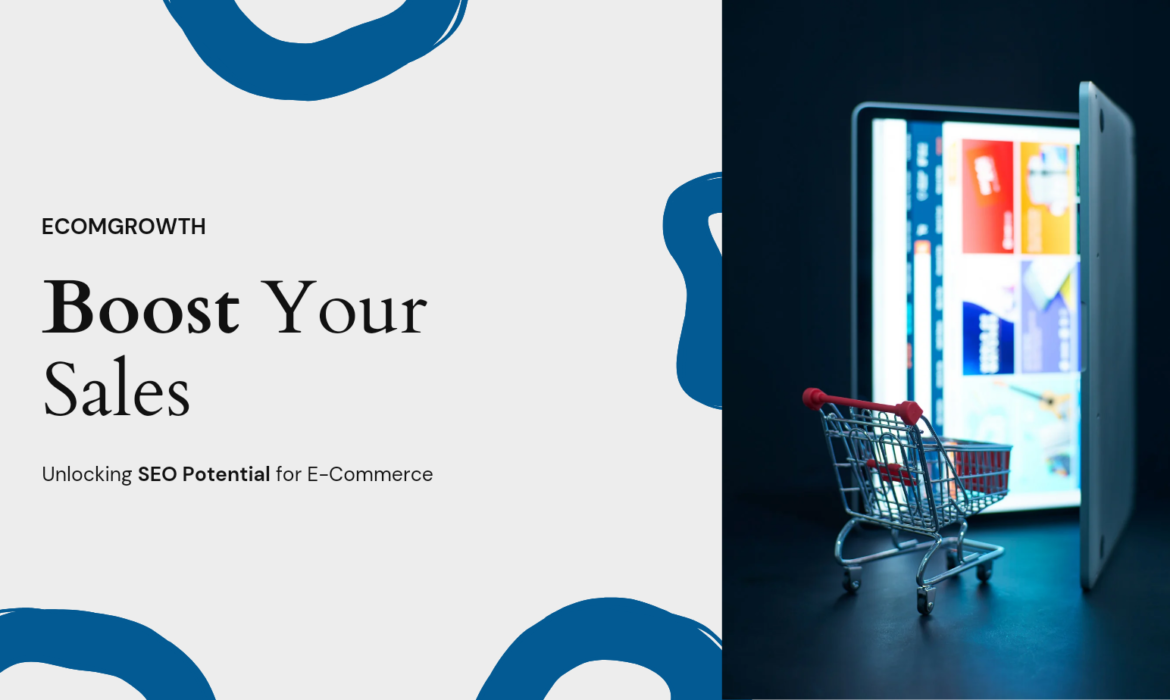081-4797-7173
In the competitive world of e-commerce, having a great product isn’t enough to drive sales. With millions of products online, how do you ensure that your items stand out and reach your target audience? The answer lies in Search Engine Optimization (SEO).
SEO is not just about ranking your homepage or category pages it’s equally crucial for your product pages. Optimized product pages not only help you rank higher in search engine results but also improve user experience, ultimately driving more traffic, engagement, and conversions.

This blog explores the importance of SEO for e-commerce product pages and provides actionable strategies to optimize them effectively.
Why SEO Matters for Product Pages
1. Increases Visibility and Traffic
When a customer searches for a product on Google or another search engine, they’re presented with hundreds, if not thousands, of options. Optimizing your product pages ensures that your listings appear on the first page of search results, increasing the likelihood of clicks and traffic.
2. Attracts High-Intent Shoppers
Unlike general searches, product searches often come from users who are ready to buy. For instance, a search query like “buy wireless headphones” indicates a strong purchasing intent. By optimizing your product pages, you position yourself to capture these high intent shoppers.
3. Improves Conversion Rates
SEO isn’t just about bringing traffic it’s about bringing the right traffic. When your product pages are tailored to specific search terms, visitors are more likely to find exactly what they’re looking for, leading to higher conversion rates.
4. Enhances User Experience
Optimized product pages provide a seamless shopping experience by delivering accurate, well-organized, and engaging content. This improves customer satisfaction and increases the chances of repeat purchases.
5. Builds Brand Credibility
Ranking high in search results for your products builds trust and credibility with your audience. Customers are more likely to buy from brands they perceive as authoritative and reliable.
Key Elements of Product Page SEO
1. Keyword Research
Keyword research is the foundation of any SEO strategy. Identify terms your target audience is using to search for products similar to yours.
Use Tools Like:
Google Keyword Planner
Ahrefs
SEMrush
Ubersuggest
Types of Keywords to Target:
Short-tail keywords: wireless headphones
Long tail keywords: best wireless headphones under $50
Transactional keywords: buy wireless headphones online
Incorporate these keywords naturally into your product title, description, meta tags, and image alt text.
2. Write Compelling Product Titles
Your product title is one of the first things search engines and customers notice.
Best Practices for Product Titles:
Include primary keywords.
Make it descriptive yet concise (50–60 characters).
Avoid keyword stuffing.
For example, instead of “Headphones,” use “Wireless Bluetooth Headphones with Noise Cancellation.”
3. Optimize Product Descriptions
A well-written product description not only helps search engines understand your product but also persuades customers to make a purchase.
Tips for Writing Product Descriptions:
Highlight unique selling points (USPs).
Use keywords naturally.
Focus on benefits, not just features.
Avoid duplicate content by writing unique descriptions for each product.
Example:
“Experience unparalleled sound quality with our Wireless Bluetooth Headphones. Designed with advanced noise cancellation technology, these headphones are perfect for work, travel, and entertainment. Lightweight and durable, they offer up to 20 hours of battery life on a single charge.”
4. Optimize Images for SEO
Images play a crucial role in e-commerce, but they need to be optimized for both SEO and user experience.
How to Optimize Images:
Use descriptive file names (e.g., wireless-headphones-black.jpg).
Add alt text with keywords.
Compress images to reduce page load time.
Use high-quality images that showcase the product from multiple angles.

5. Leverage Structured Data
Structured data (schema markup) helps search engines understand your product pages better and enhances their appearance in search results.
Types of Schema to Use:
Product schema: Includes details like price, availability, and reviews.
FAQ schema: Answers common customer questions.
Review schema: Displays star ratings in search results.
Adding structured data can increase your click-through rate (CTR) and drive more traffic to your site.
6. Improve Page Load Speed
Page speed is a critical ranking factor for SEO and impacts user experience.
How to Improve Page Speed:
Compress images and videos.
Minimize the use of heavy scripts.
Use a Content Delivery Network (CDN).
Enable browser caching.
Faster pages lead to lower bounce rates and higher conversions.
7. Encourage User-Generated Content
Reviews, ratings, and customer photos add credibility and improve SEO.
Benefits of User-Generated Content (UGC):
Increases keyword diversity.
Enhances social proof.
Encourages customer engagement.
Make it easy for customers to leave reviews by sending follow-up emails or offering incentives.
8. Optimize for Mobile Users
With more shoppers browsing and buying on mobile devices, mobile optimization is non-negotiable.
Mobile SEO Tips:
Use a responsive design.
Ensure buttons and links are easy to click.
Optimize page speed for mobile.
Test your site on multiple devices.
9. Use Internal Linking
Internal links guide users to related products or categories, improving site navigation and SEO.
Best Practices:
Link to similar or complementary products.
Use descriptive anchor text.
Avoid overloading pages with too many links.
10. Monitor and Optimize Regularly
SEO isn’t a one-time task. Continuously monitor your product pages to ensure they remain optimized.
Track Metrics Like:
Click-through rates (CTR).
Conversion rates.
Bounce rates.
Keyword rankings.
Use tools like Google Analytics and Google Search Console for insights.
Conclusion
SEO for e-commerce product pages is an essential strategy for driving traffic, enhancing user experience, and boosting sales. By optimizing your product titles, descriptions, images, and other elements, you not only improve your search engine rankings but also create a seamless shopping experience for your customers.
Remember, the ultimate goal of SEO isn’t just to bring traffic it’s to attract the right traffic and convert visitors into loyal customers. Start optimizing your product pages today, and watch your e-commerce business thrive in the competitive digital marketplace.
0






